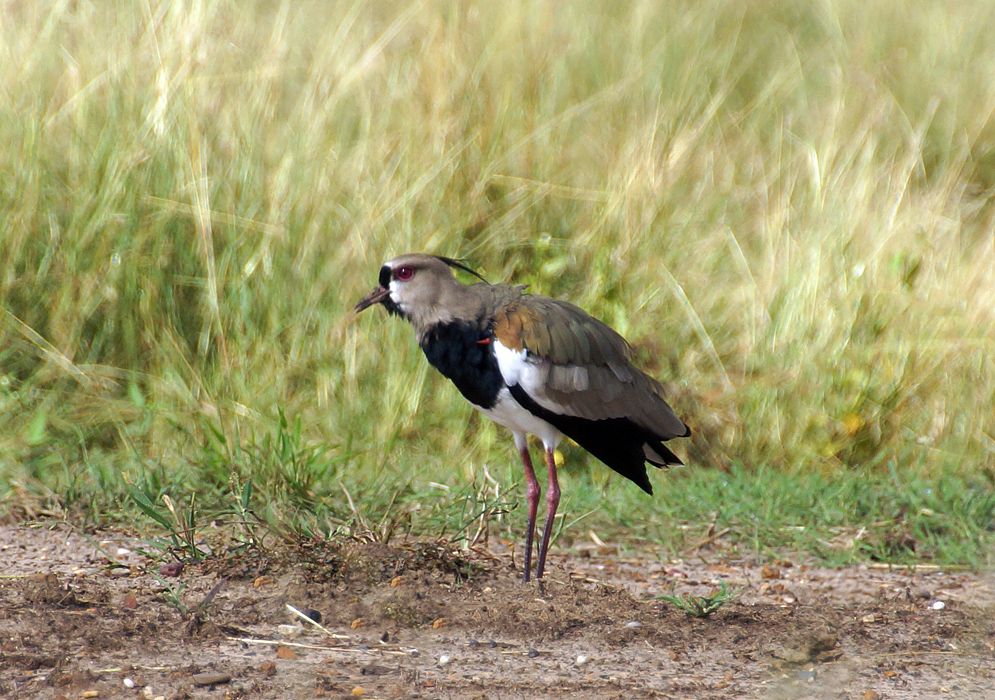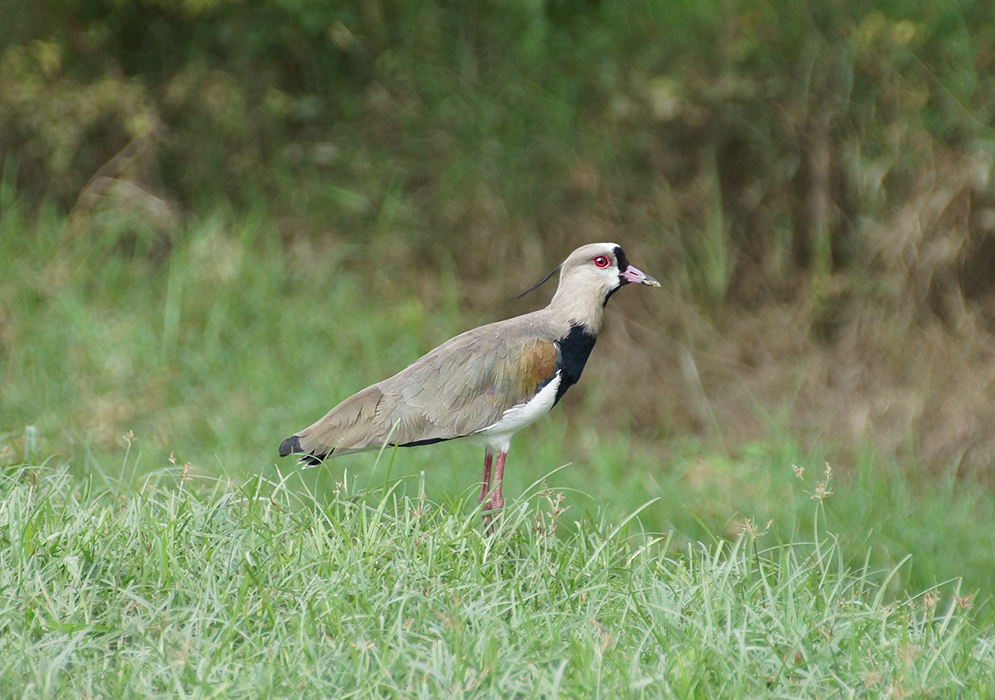This post has 11 Simple Fields-fields attached. Show fields.

The Southern Lapwing is a wader in the Charadriiformes order. This bird is commonly found throughout South America.
The Southern Lapwing is the only crested wader in South America, measuring about 13 to 15 inches in length and weighing between 8.8 to 15.0 ounces. Its striking appearance includes mainly grey head with a black forehead and throat patch, a white border separating the black face from the grey head and crest, brownish-grey upperparts with a bronze gloss, and white underparts. Notably, the bird has red bony extensions under its wings, used for defense and to intimidate predators. In flight, it displays a white wing bar, a white rump, and a black tail. There are three to four subspecies of the Southern Lapwing, varying slightly in head coloration and voice. The subspecies found in Patagonia, V. chilensis fretensis, is sometimes included in the nominate subspecies V. c. chilensis. The northern subspecies (V. c. cayennensis from the north and V. c. lampronotus from the south of the Amazon River) are sometimes considered a separate species, Vanellus cayennensis. These subspecies have a browner head, and the white face band varies in width, not reaching the center of the crown in some. There is some intergradation of these subspecies. The Southern Lapwing inhabits lakes, river banks, open grasslands, pastures, agricultural areas, and urban green spaces. The species benefits from the extension of open grassland habitats due to widespread cattle ranching. Its diet mainly consists of insects such as grasshoppers, and other small invertebrates including earthworms and cutworms. The bird employs a run-and-wait technique for hunting, mainly at night, often in flocks. Remarkably, in urban areas like Rio de Janeiro, it is seen feeding on floodlit soccer pitches during televised matches. The species is fairly common to abundant in its preferred habitats, usually found in pairs or small flocks during the austral winter, and is known for its loud and conspicuous presence.They are highly protective of their nests and young and may engage in aggressive behavior, including dive-bombing intruders who approach their nesting sites.



